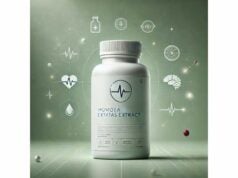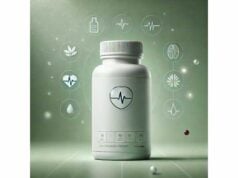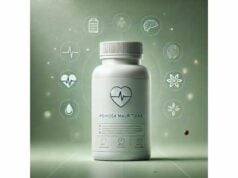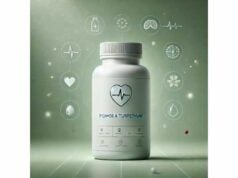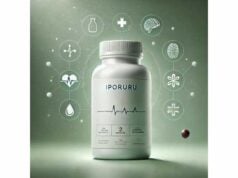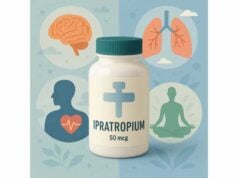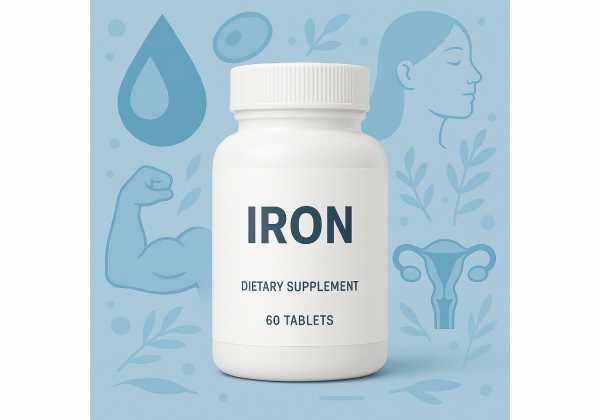
Iron is one of the body’s most tightly regulated nutrients—and for good reason. It sits at the center of hemoglobin and myoglobin, moving oxygen to every cell. When you are short on iron, fatigue, shortness of breath, hair shedding, brittle nails, and brain fog can creep in; when you have too much, oxidative stress and organ damage become risks. Supplements can be transformative for the right person, but they can also be harmful if taken without a plan. This guide explains how iron works, who needs it, the smartest ways to dose and absorb it, and how to avoid common pitfalls such as stomach upset, drug interactions, and hidden overload. You will also learn how to read lab results, choose between oral and intravenous options, and tailor your approach whether you are pregnant, an endurance athlete, a frequent blood donor, plant-forward, or managing chronic disease.
Key Insights
- Correcting iron deficiency can restore energy, exercise tolerance, and cognitive performance within weeks.
- Typical therapeutic oral doses are 40–65 mg elemental iron once daily (or on alternate days) for 8–12 weeks; maintenance for prevention is often 18–27 mg/day depending on life stage.
- Safety caveat: Unnecessary iron can accumulate; screen first when feasible and avoid routine supplementation in adults with normal ferritin and no risk factors.
- Avoid if you have hemochromatosis or unexplained high ferritin/transferrin saturation unless advised by a clinician.
Table of Contents
- What iron does in your body
- Who benefits—and the results to expect
- How to take iron correctly
- Reading labs and troubleshooting
- Safety, side effects, and who should avoid iron
- Evidence: what the data show
What iron does in your body
The oxygen economy. Iron’s best-known job is oxygen transport. Each hemoglobin molecule carries four heme groups—each heme holds an iron atom that binds oxygen in the lungs and releases it in tissues. Myoglobin in muscle performs a similar duty locally. When iron is low, the supply chain falters: your heart and lungs work harder to compensate, exercise feels tougher, and everyday tasks can feel like uphill climbs.
Energy production and brain function. Iron-dependent enzymes sit in the mitochondrial electron transport chain and in neurotransmitter pathways that make dopamine, norepinephrine, and serotonin. That’s why deficiency can show up as low motivation, impaired attention, or restless legs, even before anemia is visible on a complete blood count (CBC).
Immunity and temperature regulation. Immune cells need iron to proliferate and to generate reactive oxygen species that fight pathogens, but pathogens also need iron to grow. Your body’s strategy is to keep iron locked up in ferritin inside cells and release it carefully. In inflammatory states, a hormone called hepcidin rises, telling the gut to absorb less iron and telling macrophages to hold on to what they have. The result can be “functional” iron deficiency—iron exists in the body, but it’s not available where you need it.
Types of iron in food and supplements.
- Heme iron (from animal sources) absorbs more efficiently because it uses a dedicated transport pathway.
- Nonheme iron (plants, fortified foods, most supplements) relies on stomach acid and transporters that compete with other minerals.
- Common supplemental forms include ferrous sulfate, ferrous fumarate, ferrous gluconate, iron bisglycinate (chelated), polysaccharide iron complex, carbonyl iron, and heme iron polypeptide. They contain different percentages of elemental iron and vary in tolerability.
How much you actually need. Daily needs (Recommended Dietary Allowances, RDAs) differ by life stage: adult men typically need 8 mg/day; nonpregnant adult women 18 mg/day; pregnant adults 27 mg/day; and lactating adults 9–10 mg/day. Growing children, adolescents, and those with heavy menstrual bleeding may need more. Because the body has no regulated mechanism to excrete iron, intakes above the Tolerable Upper Intake Level (UL) of 45 mg/day for adults can create risk if taken long term without clinical indication.
Iron balance in real life. Most people meet needs through diet, but iron deficiency remains the world’s most common micronutrient deficiency—especially in menstruating individuals, during pregnancy, in toddlers, among frequent blood donors, people with gastrointestinal disorders (celiac disease, inflammatory bowel disease), those after bariatric surgery, and endurance athletes. In these groups, absorption can’t keep up with losses or increased demand, and supplements become a practical tool when diet alone isn’t enough.
Who benefits—and the results to expect
1) People with documented deficiency or anemia.
If your ferritin is low and you have anemia (low hemoglobin), iron repletion often improves energy within 2–3 weeks and normalizes hemoglobin over 6–8 weeks. Even without anemia, low ferritin (iron deficiency without anemia) can cause fatigue, impaired exercise capacity, and restless legs. Correcting the deficiency often relieves these symptoms, although the response varies by cause and coexisting conditions.
2) Pregnancy and postpartum.
Pregnancy expands blood volume and builds a placenta and fetus—an iron-intensive project. Many prenatal vitamins supply 27 mg of iron to meet the RDA. For those with confirmed deficiency, therapeutic dosing may be needed, and some will require intravenous (IV) iron if oral forms are not tolerated or if the third trimester is approaching and there’s not enough time to rebuild stores. Postpartum iron can speed recovery from delivery-related blood loss; typical postpartum courses last 6–12 weeks, tailored to labs and symptoms.
3) Heavy menstrual bleeding (HMB).
Individuals with heavy periods can lose 30–40 mg of iron per cycle (sometimes more). In addition to gynecologic management of bleeding, periodic courses of oral iron (or IV for severe cases) can prevent the monthly “drain” from becoming chronic fatigue and hair shedding.
4) Endurance athletes and high-altitude trainees.
Foot-strike hemolysis, sweat loss, and gastrointestinal microbleeding can reduce iron status. Suboptimal iron impairs VO₂ max and lactate thresholds via reduced red-cell mass and mitochondrial function. Screening ferritin during high training loads, especially in distance runners and female athletes, helps guide short, targeted supplementation until ferritin is back in a performance-supportive range (often ≥30–50 µg/L; exact targets vary by program).
5) Frequent blood donors.
Each whole-blood donation removes roughly 200–250 mg of iron. Donation centers increasingly recommend tracking ferritin and using low-dose iron (e.g., 18–27 mg/day for 8 weeks) after donation to replete lost stores, particularly for younger donors and those donating more than twice per year.
6) Plant-forward eaters and those with low stomach acid.
Nonheme iron absorption is lower and more sensitive to inhibitors (coffee, tea, calcium). Vegetarians and vegans can meet needs with planning, but during rapid growth, pregnancy, or heavy training, a modest supplement can close the gap.
What results to expect.
- Symptoms: Improved fatigue, breathlessness, and exercise tolerance often by week 2–3; hair shedding and brittle nails take longer.
- Labs: Reticulocyte count may rise by week 1–2; hemoglobin typically increases 1–2 g/dL over 4–8 weeks; ferritin rebounds more slowly and should be rechecked after 8–12 weeks.
- Function: Many notice better focus and work output when ferritin climbs into a healthy range.
Who might not feel better (until the root cause is addressed).
If bleeding continues unchecked (e.g., undiagnosed GI loss, heavy menses), if celiac disease or H. pylori is untreated, or if inflammation keeps hepcidin high, oral iron alone won’t solve the problem. In these cases, treat the cause and consider IV iron when indicated.
How to take iron correctly
Step 1: Pick the right form and elemental dose.
- Ferrous sulfate (20% elemental): a 325 mg tablet ≈ 65 mg elemental iron.
- Ferrous fumarate (33% elemental): a 210 mg tablet ≈ 69 mg elemental.
- Ferrous gluconate (12% elemental): a 325 mg tablet ≈ 38 mg elemental.
- Iron bisglycinate (chelated): often 18–28 mg per capsule; may be gentler on the stomach for some.
- Polysaccharide iron complex/carbonyl iron: slower release; good tolerability; check actual elemental content.
- Heme iron polypeptide: smaller doses (e.g., 12–24 mg) can be efficient; cost is higher.
For therapeutic repletion, many clinicians start with 40–65 mg elemental iron once daily, with the option to dose every other day if tolerance or hepcidin dynamics suggest better absorption. For prevention/maintenance, typical intakes are 18 mg/day (men and nonpregnant women meeting RDA through diet) and 27 mg/day in pregnancy (via prenatal vitamins).
Step 2: Time it for absorption but respect your stomach.
Iron absorbs best on an empty stomach, but many people feel nauseated that way. Practical options:
- Take 30–60 minutes before a meal with a full glass of water.
- If you have nausea, take with a small snack that’s low in calcium and free of tea/coffee.
- Consider morning dosing; some find evening iron disturbs sleep or causes reflux.
Step 3: Pairings that help—or hurt—absorption.
- Helpful: A small amount of vitamin C (e.g., fruit or 100–200 mg ascorbic acid) can modestly improve nonheme absorption. Avoid megadoses that upset the stomach.
- Neutral-to-helpful: Light protein or carbohydrate.
- Unhelpful within 2 hours: Calcium supplements or dairy, coffee/tea (polyphenols), high-fiber bran cereals, antacids/PPIs, and multiminerals containing zinc/magnesium.
Step 4: Avoid drug–nutrient collisions.
Iron binds many medications and blocks their absorption. Separate iron by at least 4 hours from:
- Levothyroxine
- Fluoroquinolones and tetracyclines
- Bisphosphonates
- Some Parkinson’s medications (levodopa/carbidopa)
If you take multiple morning meds, consider an early afternoon iron dose between meals.
Step 5: Duration and monitoring.
Plan on 8–12 weeks of therapeutic dosing to correct anemia, then continue another 4–8 weeks (or take a lower maintenance dose) to rebuild ferritin stores. Recheck hemoglobin and ferritin after your course; the aim is to normalize hemoglobin and restore ferritin into a range that covers future needs.
When oral iron isn’t enough.
Intravenous iron is appropriate when:
- Oral iron is not tolerated despite trials of different forms/timing.
- Ongoing losses outpace gut absorption (e.g., inflammatory bowel disease flare, late pregnancy with anemia).
- You need a rapid correction before surgery or in severe anemia.
IV iron bypasses hepcidin-regulated absorption and can restore stores within 1–2 infusions, depending on product and total iron deficit.
Practical daily plans.
- Standard plan: 65 mg elemental iron each morning, plus a piece of fruit; avoid dairy/coffee two hours bracketing the dose.
- Sensitive stomach: 40–45 mg elemental iron every other day mid-morning; titrate up as tolerated.
- Prenatal: Use your 27 mg prenatal; if anemic, add a separate 40–65 mg iron dose under obstetric guidance.
Reading labs and troubleshooting
Key labs and what they mean.
- Hemoglobin (Hb) and hematocrit (Hct): Low values indicate anemia; they don’t tell you the cause.
- Mean corpuscular volume (MCV): Low MCV suggests microcytosis (common in iron deficiency or thalassemia).
- Ferritin: The body’s iron storage protein; low ferritin = depleted stores. It rises in inflammation, liver disease, and malignancy, so a normal ferritin doesn’t always rule out deficiency.
- Transferrin saturation (TSAT): Serum iron ÷ total iron-binding capacity; low TSAT with low ferritin supports deficiency.
- C-reactive protein (CRP): Helps interpret ferritin in inflammatory states; high CRP can mask deficiency by artificially elevating ferritin.
Thresholds commonly used in adults.
- Ferritin <15 µg/L is highly specific for iron deficiency in otherwise healthy, nonpregnant adults.
- Many clinicians treat ferritin <30 µg/L when symptoms or anemia are present.
- In chronic inflammation, a higher ferritin cut-point (e.g., <100 µg/L with TSAT <20%) is often used to define functional iron deficiency.
- During pregnancy, ferritin tends to run lower; obstetric teams use tailored thresholds depending on trimester and local guidelines.
Patterns to recognize.
- Iron deficiency without anemia: Ferritin low, Hb normal—common in athletes and people with HMB; treat if symptomatic.
- Iron deficiency anemia: Low Hb, low ferritin, high transferrin/TIBC, low TSAT.
- Anemia of chronic inflammation: Normal/high ferritin, low serum iron, low TSAT, high CRP; oral iron may perform poorly until inflammation is addressed—IV iron may be considered.
- Possible overload: High ferritin with TSAT >45% raises suspicion for hemochromatosis or secondary iron overload; do not take iron and seek evaluation.
If you are not improving.
- Adherence and timing: Are you taking the right elemental dose consistently, away from blockers?
- Ongoing losses: Heavy menstrual bleeding, GI bleeding (ulcers, polyps, cancer), frequent donation—address causes.
- Malabsorption: Celiac disease, bariatric surgery, atrophic gastritis, H. pylori, proton-pump inhibitors; consider testing and alternative delivery (IV).
- Inflammation/hepcidin: Active IBD, infection, or obesity-related inflammation can blunt absorption; coordinate with your clinician on timing and route.
- Misdiagnosis: Thalassemia trait, B12/folate deficiency, chronic kidney disease, and hemolysis can mimic or coexist with iron issues.
How often to recheck.
- Therapeutic course: Repeat Hb and ferritin 8–12 weeks after starting.
- Maintenance/prevention: If you’re at ongoing risk (HMB, athlete, donor), check 2–4 times per year until stable, then annually.
Targets after treatment.
- Bring Hb into the reference range.
- Build ferritin to a healthy buffer; many adults feel best with ferritin ≥50 µg/L, though needs vary by context (e.g., athletics, pregnancy). Avoid overshooting; more is not better.
Safety, side effects, and who should avoid iron
Common side effects and simple fixes.
- Nausea, metallic taste, heartburn: Switch to a lower elemental dose, try every-other-day dosing, or change the form (bisglycinate, polysaccharide, or carbonyl iron).
- Constipation: Increase fluids and fiber; consider magnesium citrate at night if appropriate; pick gentler forms.
- Dark stools: Harmless and expected.
- Tooth staining (liquids): Dilute, use a straw, and rinse.
Drug and nutrient interactions to respect.
- Space iron by ≥4 hours from levothyroxine, fluoroquinolones, tetracyclines, and bisphosphonates.
- Separate from calcium or multiminerals by at least 2 hours.
- Reduce tea/coffee around the dose; polyphenols impair absorption.
- Large doses of zinc or magnesium taken simultaneously hinder uptake.
Overload risks and red flags.
- Hemochromatosis (HFE variants): Do not take iron unless directed by a specialist; excess iron accumulates in the liver, heart, and pancreas.
- Ferritin persistently high (e.g., >300 µg/L in men/postmenopausal women, >200 µg/L in premenopausal women) with TSAT >45% deserves evaluation.
- Chronic liver disease, repeated transfusions, and some anemias (thalassemia, sideroblastic anemia) can cause secondary iron overload—avoid iron unless specifically prescribed.
Special populations.
- Pregnancy: Most can use prenatal iron safely; confirm dosing with your obstetric clinician, especially if anemic late in pregnancy (IV iron may be preferable).
- Children: Pediatric dosing is weight-based (often 3–6 mg/kg/day elemental divided). Keep all iron out of children’s reach: acute iron overdose is a pediatric emergency.
- Older adults: Start low; constipation and polypharmacy raise interaction risks.
- Chronic kidney disease: Management is specialized; labs and route of iron (often IV, plus erythropoiesis-stimulating therapy) follow nephrology protocols.
When to stop and call a clinician.
- Severe abdominal pain, vomiting, or black tarry stools unrelated to iron.
- New high fevers, chest pain, or signs of an allergic reaction.
- No hemoglobin improvement after 8 weeks of adherent therapy.
Upper limits and long-term use.
- Avoid exceeding a chronic intake above the UL of 45 mg/day without medical indication. Many people can transition from therapeutic dosing to a maintenance multivitamin or to dietary strategies once stores are restored.
Evidence: what the data show
Consensus on needs and safety.
Nutrition authorities outline life-stage RDAs, groups at risk, deficiency signs, and toxicity thresholds. They also caution that iron supplements should fit a confirmed need or a high-risk context (e.g., pregnancy), because unnecessary iron can accumulate. These resources summarize interactions (thyroid, antibiotics), the UL of 45 mg/day for adults, and common side effects.
Prevention and public health.
Global health bodies recommend daily iron supplementation as a public-health intervention for menstruating women and adolescent girls in settings with high anemia prevalence, alongside diet and infection control. During pregnancy, most prenatal regimens include daily iron to prevent maternal anemia and support fetal development; some programs use weekly dosing for adherence and side effect balance.
Assessment and cut-points.
Ferritin remains the most practical storage marker. A very low ferritin (<15 µg/L) in an otherwise healthy adult is strongly indicative of deficiency; in inflammation, ferritin thresholds shift higher, and algorithms integrate TSAT and CRP to differentiate true deficiency from sequestration. Population guidelines describe how to interpret ferritin across health states, and why laboratories should report context or use inflammation-adjusted models when possible.
Clinical guidelines for adults with iron deficiency anemia.
Practice guidelines emphasize:
- Find and treat the cause (e.g., heavy menses, GI blood loss, celiac disease).
- Use oral iron first when appropriate; aim for effective elemental doses and optimize absorption strategies.
- Switch to IV iron if oral therapy fails, is not tolerated, or time is short (late pregnancy, preoperative).
- Recheck labs after repletion; avoid indefinite supplementation without a marker-guided need.
Efficacy magnitude in symptomatic adults.
Randomized trials in menstruating women show that daily iron improves hemoglobin and iron indices and reduces the prevalence of anemia over 8–12 weeks. In real-world care, patients report earlier improvements in fatigue and exertional symptoms as hemoglobin rises and ferritin recovers; performance gains in athletes track with rising iron availability.
Bottom line for decision-making.
Iron works when the diagnosis is correct, the dose is elemental and absorbable, and the cause of loss or malabsorption is addressed. Pair your supplement plan with smart timing, diet support, and lab-guided endpoints, and treat iron as a powerful therapy—one that should be used purposefully, safely, and for the right reasons.
References
- Iron – Health Professional Fact Sheet 2025 (Guideline/Factsheet)
- WHO guideline on use of ferritin concentrations to assess iron status in individuals and populations 2020 (Guideline)
- Guideline: Daily Iron Supplementation in Adult Women and Adolescent Girls 2016 (Guideline)
- BSG Guidelines for the Management of Iron Deficiency Anaemia in Adults 2021 (Guideline)
Disclaimer
This article is for educational purposes only and is not a substitute for professional medical advice, diagnosis, or treatment. Do not start, stop, or change any medication or supplement without guidance from your healthcare professional. Iron can be harmful if used unnecessarily or at excessive doses. If you have symptoms of anemia, high ferritin, chronic illness, are pregnant or breastfeeding, or take prescription medicines (especially thyroid or antibiotics), seek personalized advice and lab testing.
If this guide helped you, please consider sharing it on Facebook, X (formerly Twitter), or your preferred platform, and follow us for more evidence-based health content. Your support helps us continue producing high-quality resources.

